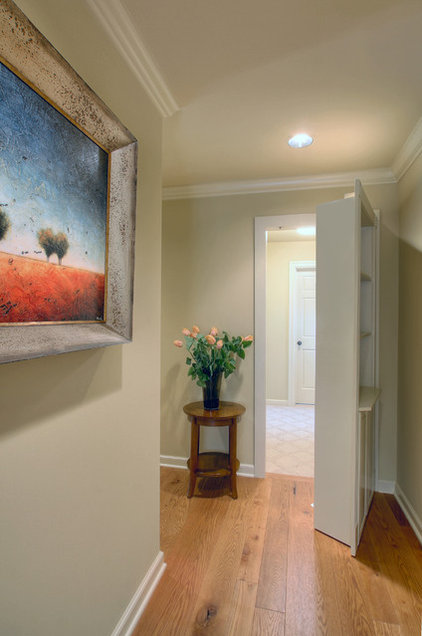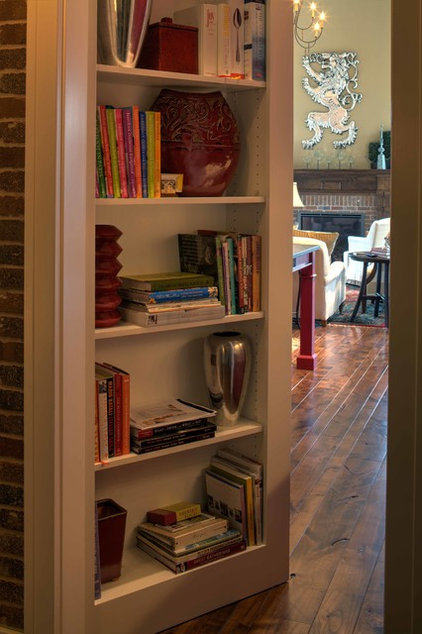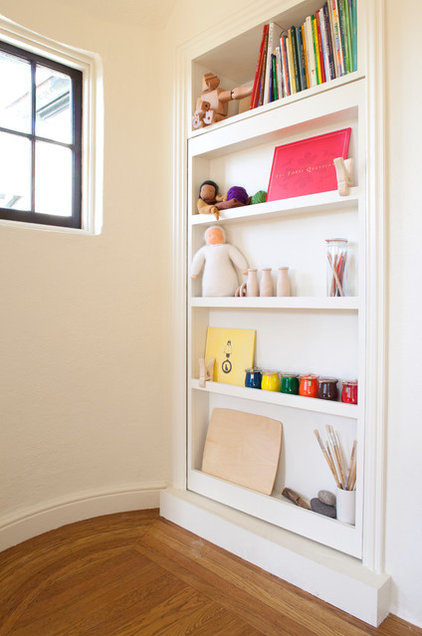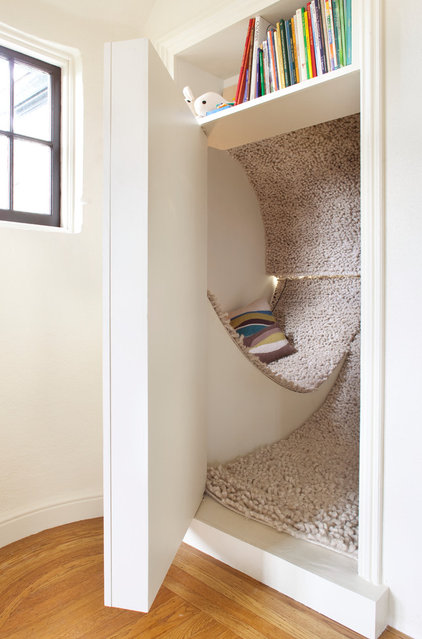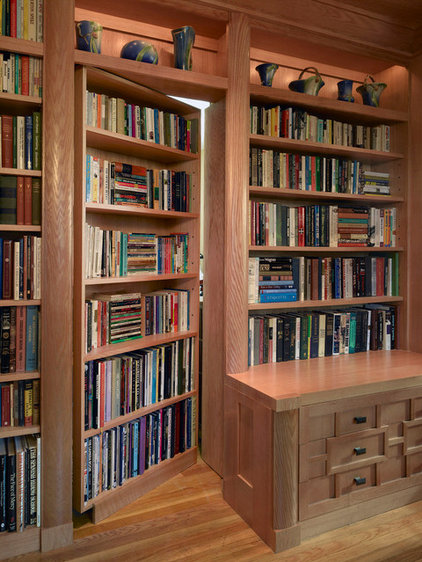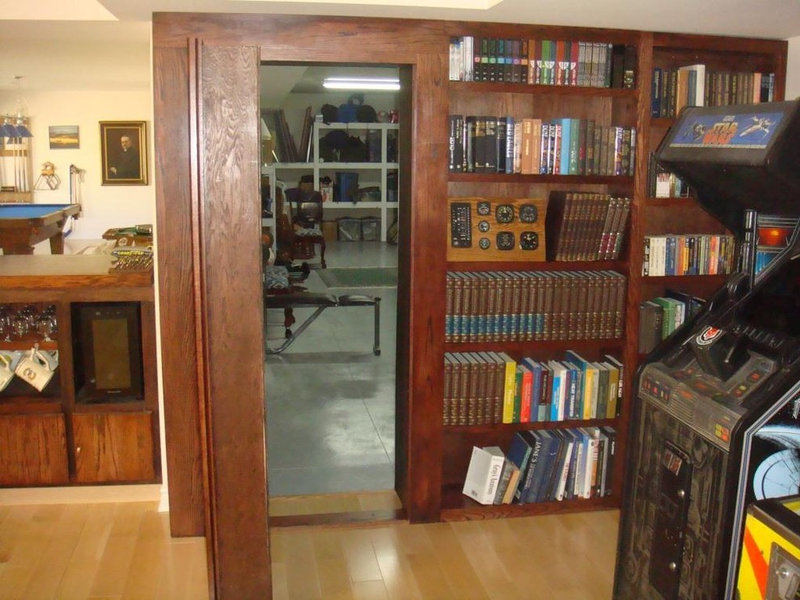Everyone’s got something to hide. Cash, documents, jewels, guns, clutter — these are things that earn our extra consideration for being stashed away securely. And no, under your mattress or at the bottom of your sock drawer isn’t going to cut it.
Enter the hidden doorway behind the bookcase. This cool concept keeps your belongings safely tucked away out of sight. Plus, it’s fun. Here’s how to add one.
Things to consider: First you’ve got to decide where your secret doorway will be. Obviously, it’s going to be much easier to turn an existing doorway into a hidden one. Hallway closets, laundry rooms, mechanical rooms and home offices are great candidates.
Otherwise, if you choose to cut into an existing wall space, you’ll likely want to hire a professional to help determine if your chosen spot is doable or not. If you have to reroute electrical wiring, plumbing or HVAC ducts, this project can quickly get expensive.
You’ll then want to measure your doorway — 32 inches and 36 inches are the most common widths — and think about how you’ll want to conceal the opening. Bookcases are by far the most popular choice. They do a great job of distracting people from thinking there’s a doorway behind them, and are functional because you can store books and display items on them.
Wende recommends considering how your bookcase unit and frame will match up with nearby trimwork or other cabinets. “If you can paint it onsite while you’re installing other cabinetry, or at least get a good match to surrounding pieces, that’s best,” he says. “Otherwise it will give itself away.”
He says it would cost about $1,500 to $1,750, parts and labor, for a piece similar to the one shown here.
“Everyone loves that element of surprise,” Weigley says. “When you walk into a room and everything’s understood — there’s the bed, there’s the dresser — it can be boring. Whereas when you create a space that gets revealed or explored, it creates something in people — a sense of wonder that captures their interests.”
He says it takes a skilled team to create a unit that’s flush with the frame as well as the floor. Otherwise your door-hiding bookcase will stand out like a sore thumb. This project was a three-person job. A designer spearheaded the aesthetic direction and had the technical expertise to assess the wall structure. Dutka made sure it was possible to build it accurately. And a cabinetmaker built the actual unit.

